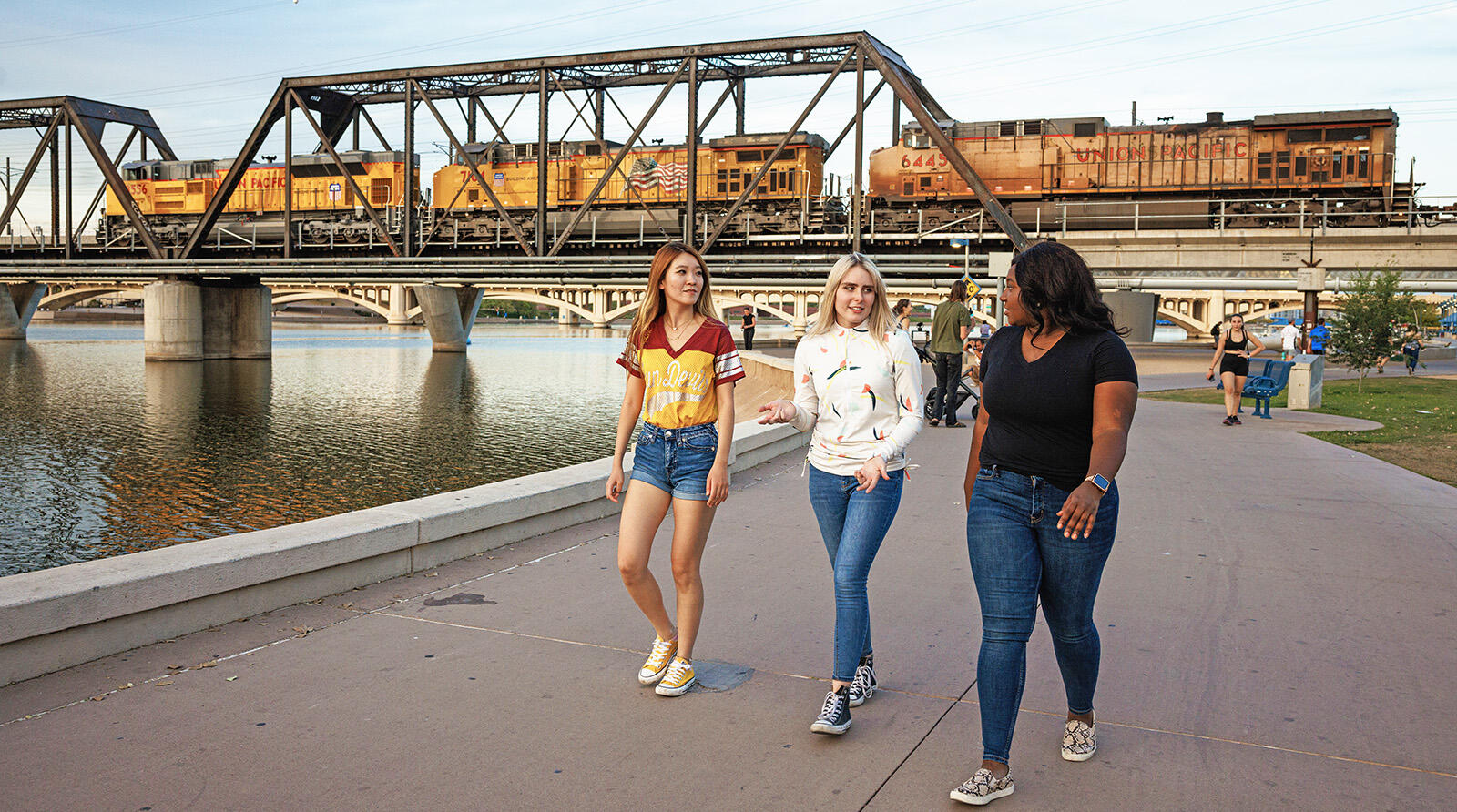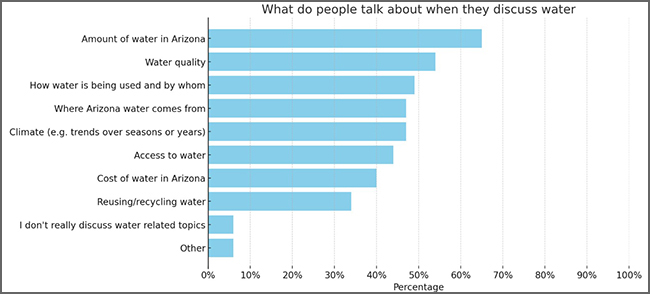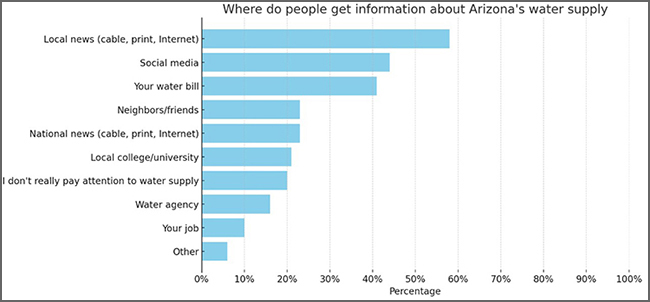
What Arizona residents want to know about water
“Will we run out of water?” “Where does our water come from?” “Is our water safe to drink?”
These are just a few of the over 600 questions Arizona residents have asked us about water in our state. The questions came in as part of a short, online survey asking residents where they get their water information and what burning questions they would like to have answered.
The tensions around water in the Southwest, made more complex by three decades of drought, can lead to confusion and misunderstanding about Arizona’s water. Questions abound about everything from our groundwater supplies to the health of the Colorado River to the safety of our drinking water.
To address these questions, researchers with the Arizona Water Innovation Initiative (AWII) – a multiyear, statewide project led by the Julie Ann Wrigley Global Futures Laboratory in collaboration with the Ira A. Fulton School of Engineering – are designing trustworthy, web-based solutions to help Arizonans understand how much water the state has available, how we can augment our existing supplies and how we can mitigate the potential effects of water scarcity in the future.
While future water shortages may seem scary, the daily reality of water availability for most Arizona residents is as uneventful as turning on their taps each morning. High-quality water is reliably provided by cities and water providers, and that’s as much as many residents have to think about it.
However, big decisions are being made about how communities manage and use their water, so researchers are helping to develop creative ways of engaging residents at the community-level. These experiences include virtual reality and games that take people places they wouldn’t normally get to visit, such as an underground aquifer, or inside the pipes of an advanced water purification facility.
To ensure that these virtual experiences connect with users, AWII researchers are committed to following a human-centered design process, meaning that we first do a lot of work to understand what residents value most about water, what their concerns are and what they’d like to know more about.
One example of this work to provide trusted information that residents want began in the fall of 2023 with the Arizona Water Survey. By asking residents where tey get their information and what questions they have about water – instead of assuming that we know – our team has been able to prioritize some key themes and insights. At the time of this post, we have collected responses from 197 residents.
When asked more generally what residents discuss when they discuss water, our survey found that people focused most on the amount of water available in Arizona and the quality of this water.

When we asked where people typically get their information about water supply and quality, residents mostly relied on local news and social media.

In addition to answering our questions, respondents also provided our research team with three to four of their most pressing water questions. By analyzing the categories that resident questions fell into, our research team was able to identify information gaps and most salient water uncertainties. We found that the most common questions pertained to water quality and safety, water availability and supply and conservation.

We also wanted to analyze the tone of the questions residents were asking, and whether they seemed to be asking them out of fear/concern, general curiosity or a desire to find solutions. Categorizing questions in these ways helps our research team to better prioritize what residents would like to discuss and where those discussions should start.

To understand our respondents even better, we asked residents how long they have lived in Arizona, whether they own a home and which age group they fall into. Of the 632 total questions people asked about water, 44% of these questions expressed a tone of concern/fear. Interestingly, as respondents’ age increased their concern/fear tone decreased, and they asked more solutions-oriented questions, such as “What are ways to improve access to clean water for all communities?”

We also found that younger Arizonans asked the largest number of questions about the quality and safety of their water while older respondents asked the largest number of questions about sustainability and conservation, and law and policy. Homeowners asked 5.5% more questions about law and policy compared to renters, and renters asked 12.4% more questions about water quality.
Now that we understand how water concerns vary with age, we can tailor our messaging to address what’s important for each subset of residents. For example, because younger residents are more concerned about water quality, we are designing several virtual reality experiences that show how water is purified. We hope this information will spark residents’ curiosity about their water supply and help them understand its quality and drinkability.
The AWII User Experience (UX) team works with residents and researchers to ensure design decisions will enrich human knowledge and ensure a valuable experience. By empathizing with user needs, we can tailor our digital tools to help people learn what they want to learn, and make scientific information more understandable.
To participate: take our Arizona Water Survey and contribute to our efforts connecting Arizona residents with trusted water information.
About the author: Danielle Storey is an associate user experience researcher with the Arizona Water Innovation Initiative. She was born and raised in Arizona, and became interested in the state’s water ecosystem while pursuing a master's degree in Human-Computer Interaction from ASU. Her mission at AWII is to design user experiences that effectively explain complex climate concepts, and empower people with actionable insight. She believes community engagement in water policy and management practices is essential to Arizona’s sustainable water future.